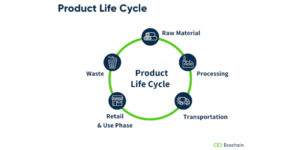The Corporate Sustainability Reporting Directive (CSRD) is Europe’s new way of making sustainability reporting more meaningful—and more widely adopted.
It replaces the old Non-Financial Reporting Directive (NFRD) and expands the rules. Instead of just a few thousand companies reporting, now over 50,000 businesses across Europe will have to report on their sustainability impact.
📌 Important update:
The EU Omnibus Proposal, released in early 2025, may limit or postpone how many companies must comply with CSRD in the short term. It’s not finalized yet, but it could affect the timeline or scope.
So, what does that mean for your business?
Will CSRD apply to your company?
If your company meets two out of these three, then yes—CSRD will apply:
- Annual turnover of over €40 million
- Assets of over €20 million
- More than 250 employees
This includes many manufacturers, assemblers, and companies with complex supply chains—especially those operating in sectors like food, packaging, or consumer goods.
Why supply chain matters more than ever
Up to 80% of your customers’ total footprint comes from the supply chain, namely the upstream and downstream activities.
That includes:
- Upstream: Environmental impact (such as the emissions from producing the materials or ingredients you provide as a supplier).
- Downstream: The usage phase of a product (e.g., electricity consumed by products when used by consumers).
So what’s changing? As a supplier, you’ll need better data
To comply with CSRD, you’ll need to share reliable, transparent data on your environmental impact—not just rough estimates or industry averages.
That means sharing real data with your customers. Especially if you’re responsible for a big part of their carbon or environmental footprint. In most cases, you’ll need to do product-level footprinting—so that your customers know the actual impact of the materials or products they’re buying.
And yes, that’s a shift. But it’s also an opportunity to get ahead, build better relationships, and drive real improvements.
What kind of footprint data are we talking about?
Under CSRD, companies are expected to report on:
- Carbon footprint (emissions from operations and supply chain)
- Other environmental impacts, like water use, pollution, and waste
Carbon reporting will follow the Greenhouse Gas Protocol, and many companies will use Life Cycle Assessments (LCAs) to calculate impact—especially for products and supply chains.

This is going to trickle down—fast
Even if you don’t fall under CSRD yet, you’ll still feel the effects. Why?
Because your customers might be affected—and they’ll ask you for environmental data to meet their own reporting requirements.
Here’s how the EU’s Head of Corporate Reporting put it:
“Large companies will need data from their suppliers. That request will trickle down the supply chain—first to direct suppliers, then beyond.”
– Alain Deckers, European Commission
What now? A few key takeaways:
- CSRD is already in effect. Large companies start reporting in 2025 (on 2024 data), with smaller ones to follow.
- If you’re a supplier to a large company, expect requests for carbon and environmental data soon—if you haven’t already.
- Primary data matters. Product footprinting is becoming a must-have, not a nice-to-have.
- You don’t need to figure it out alone. Software like Ecochain is built to help you measure and manage product footprints, with expert support when you need it.
New developments: CSDDD & Omnibus
Keep an eye on regulatory updates. The proposed Corporate Sustainability Due Diligence Directive (CSDDD) and the EU Omnibus Proposal are reshaping what companies are expected to report—and when.
- CSDDD strengthens accountability for human rights and environmental risks in the supply chain
- The Omnibus Proposal may delay or reduce the number of companies covered under CSRD in the short term
Find out what your next steps should be here.



